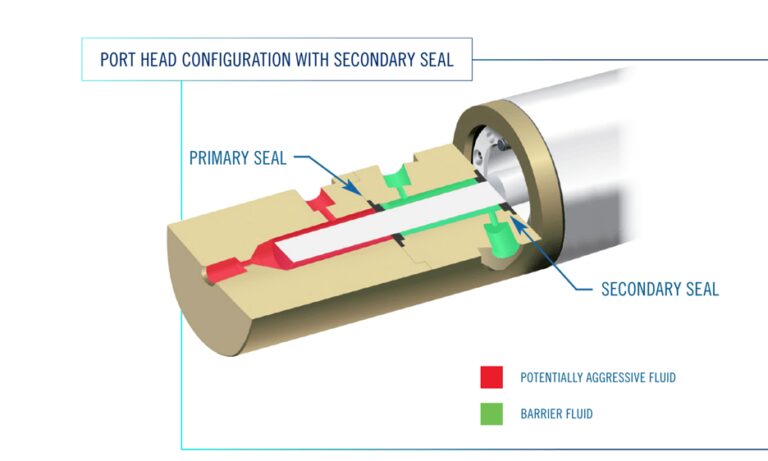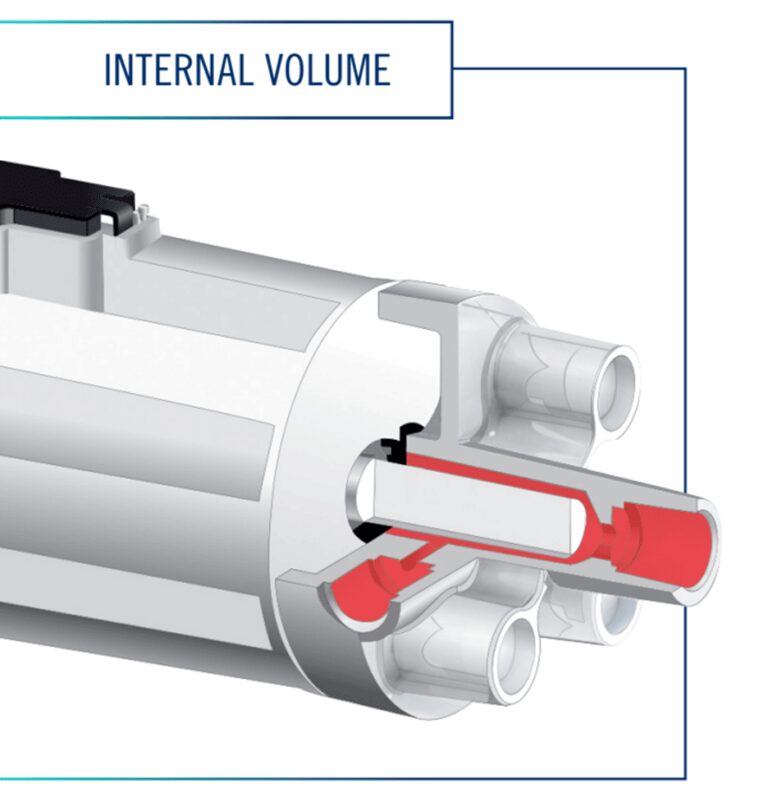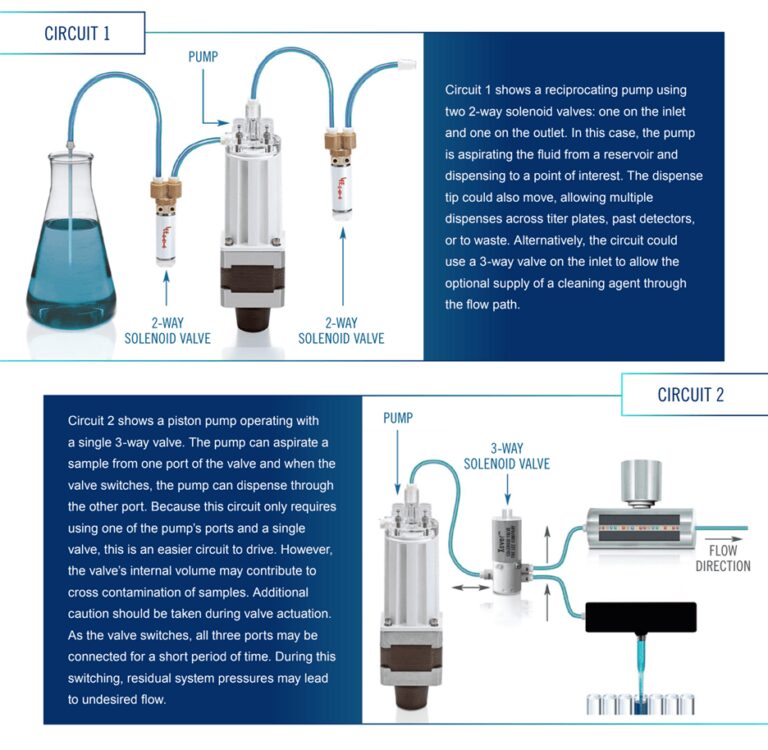Newcomers to medical device design may think pressure and flow rate are sufficient parameters when selecting a pump. While this may be true in some industrial applications, medical device requirements are more demanding. A thorough review of the selection criteria for a medical pump is required to ensure the correct pump is chosen for every application.
Continuous flow pumps like gear and peristaltic pumps provide a constant, non-pulsing flow over time. This makes them well-suited for applications requiring extended, steady flow, such as infusions.
Reciprocating pumps like syringes and diaphragms provide an intermittent, pulsed flow dispensed in precise, metered volumes. This makes them ideal for accurately dispensing reagents, samples, or buffers in analytical instruments.

Diagram of The Lee Company Dual Seal Variable Volume Pump
Ensuring the pump’s wetted materials are chemically compatible with the fluids handled is critical. Otherwise, the fluids could corrode or contaminate the internal pump components over time.
Pumps are available in inert materials like PTFE, stainless steel, ceramics, and specialized alloys to accommodate aggressive acids, bases, solvents, or salts. Proper material selection prevents pump failures or cross-contamination issues.
The pump must be sized to match the application’s required flow rates and pressure range. Selecting a pump with flow or pressure ratings that are too low could starve the system. Conversely, choosing one with ratings far exceeding the application needs adds unnecessary costs. Work closely with the pump supplier to match the performance to your requirements.
The tubing to connect the pump to the upstream and downstream components must be properly sized. Restrictive tubing can limit flow rates. Oversized tubing can create unswept volumes that impact accuracy. Similarly, valves must provide enough flow while also sealing effectively. Poor tubing or valve selection can undermine pump performance.

The internal volume of a pump’s port head in red.
A pump’s internal fluid-contacting volume affects priming needs, contamination risks, and accuracy. Larger internal volumes increase the amount of valuable reagents needed for priming. They also raise the risk of cross-contamination between fluids. Smaller volumes minimize these issues but reduce maximum flow rates. Balance these trade-offs carefully.
Pump size and power consumption are important considerations, especially for portable medical devices. More compact pumps take up less space. Low-power units generate less heat and simplify cooling needs. This enables smaller, more energy-efficient devices.
Frequent maintenance to replace seals, gaskets, or lubrication increases downtime. Maintenance-free pumps improve uptime and lower the overall cost of ownership. Consider long-life, low-maintenance pumps whenever possible.

While medical devices contain elaborate and sophisticated fluid circuits, they are often represented in the basic schematics below.
Thoroughly evaluating these key pump selection factors will lead to the optimal choice for your unique medical needs. Partnering with an expert pump supplier simplifies the process.
Interested in a deeper dive into selecting a medical pump for your project? Download the full insight.
Our global sales force of technical sales engineers is available to provide fast, accurate customer assistance and help you find the best solution for your fluid control challenge.
Always verify flow calculations by experiment.
*There are many parameters to consider when determining V-Factor. Click here for more information.